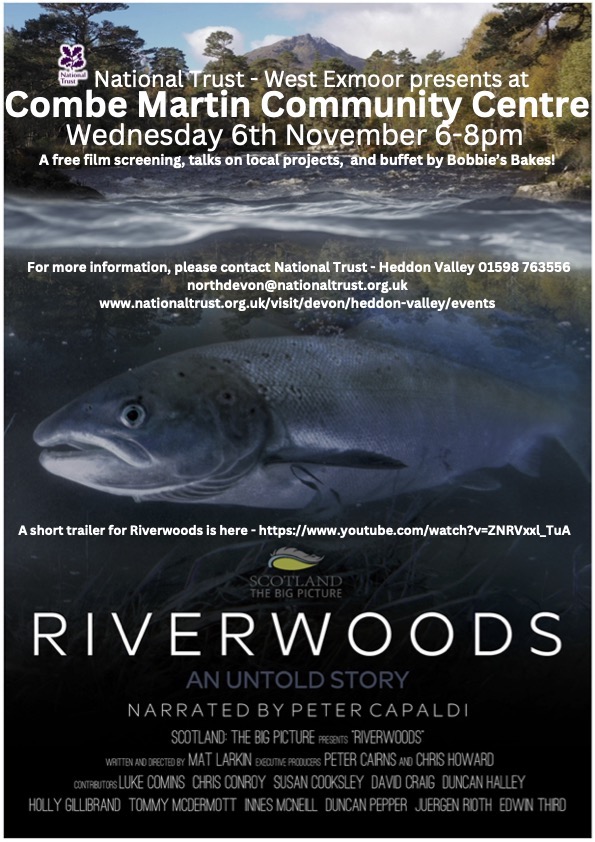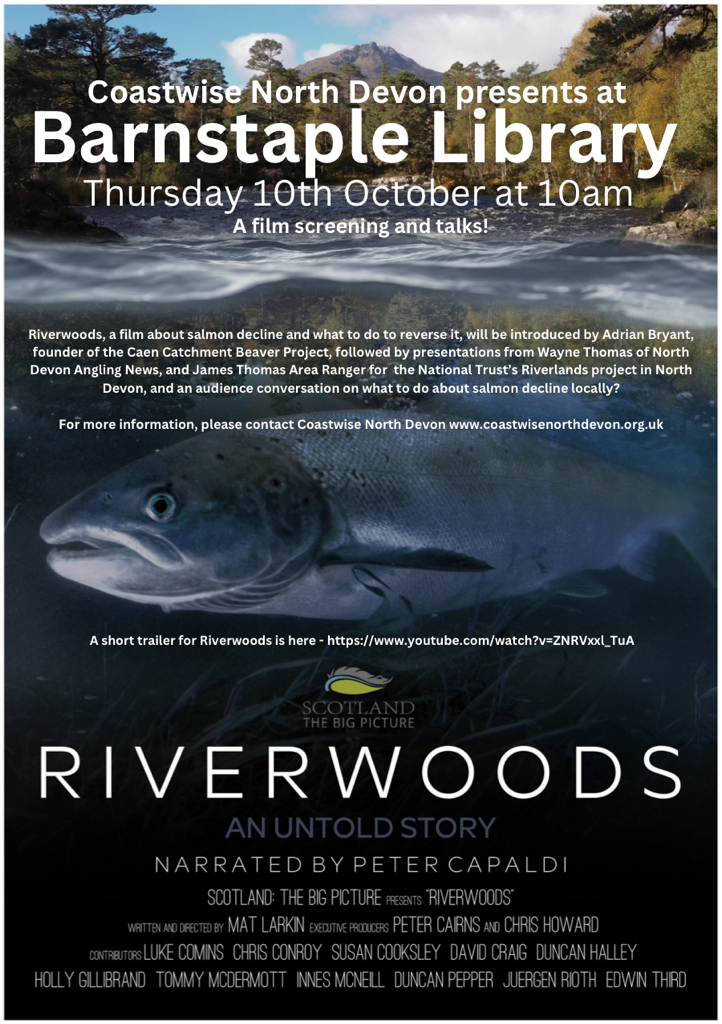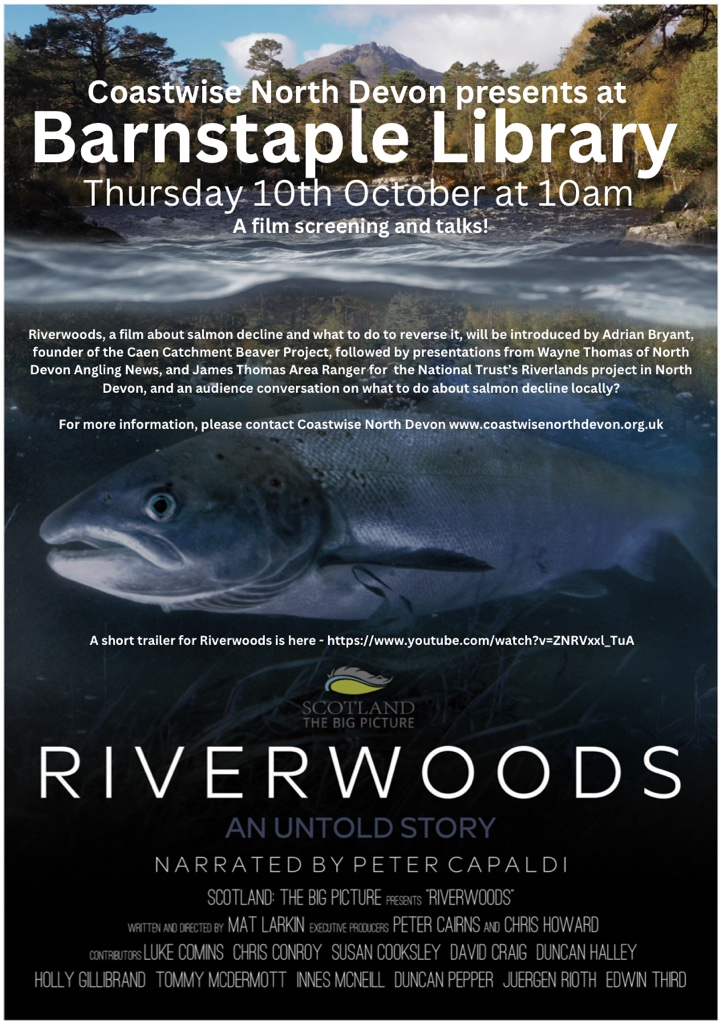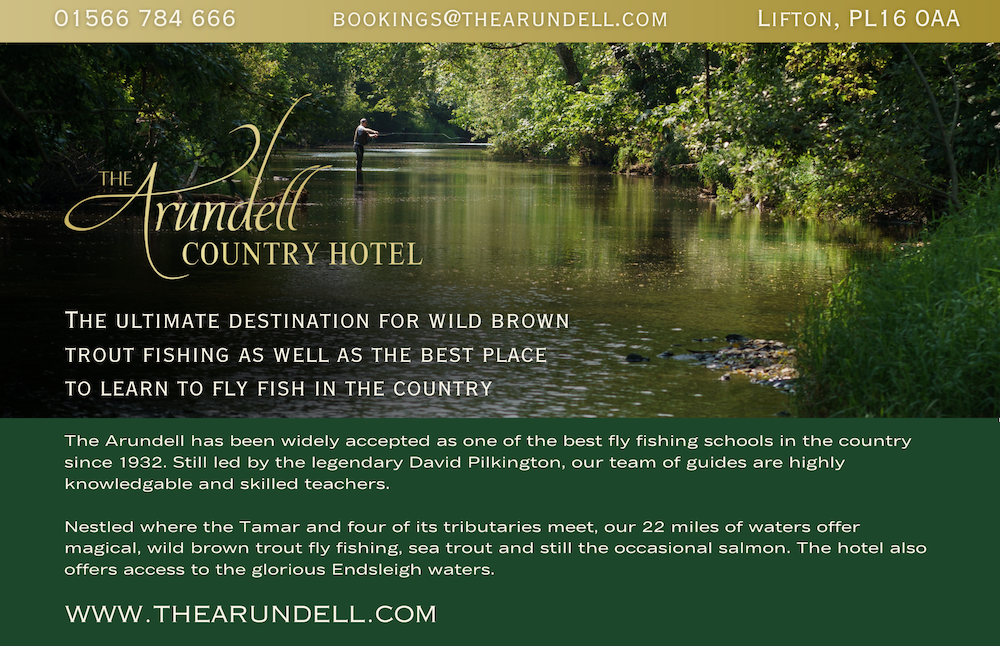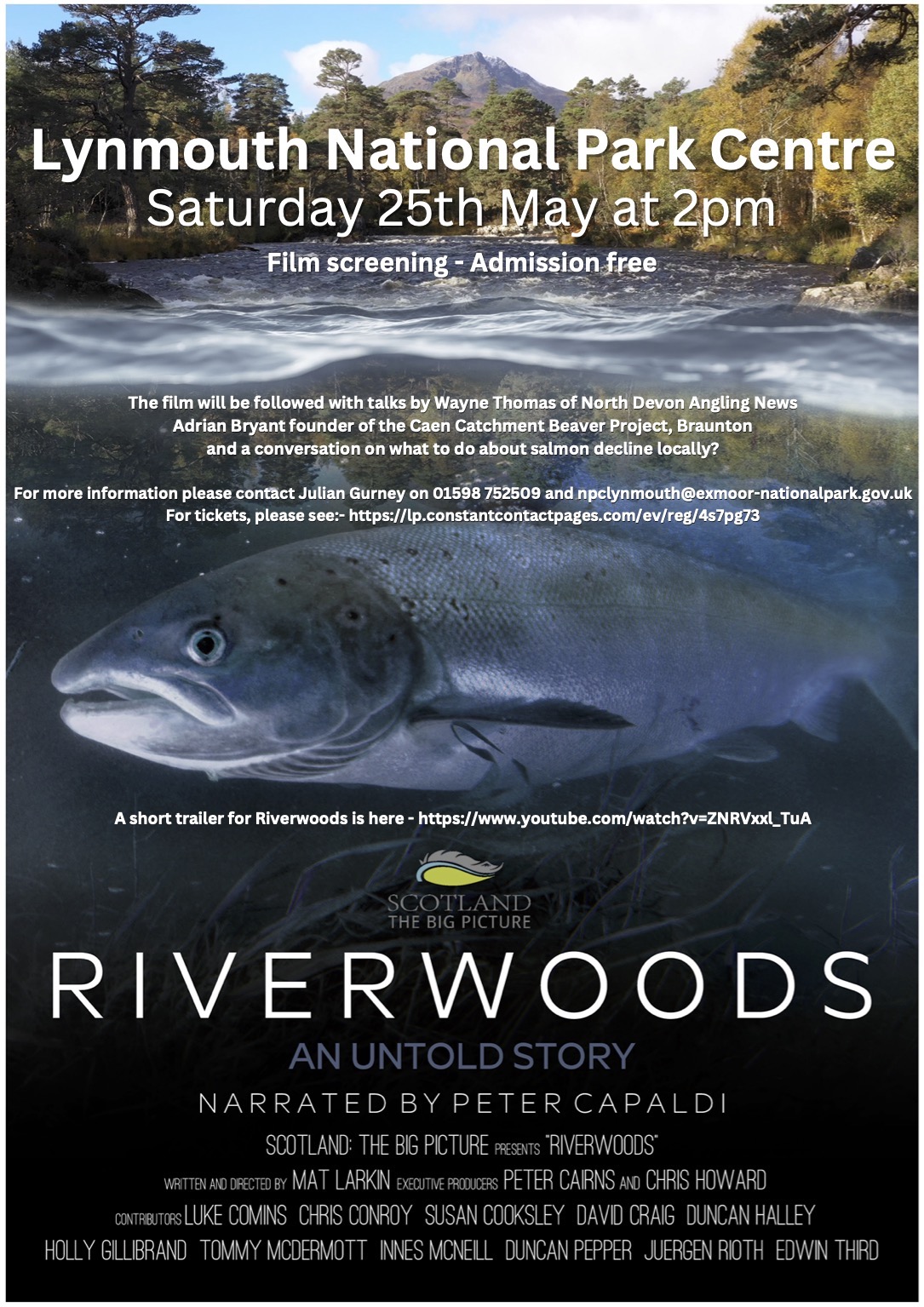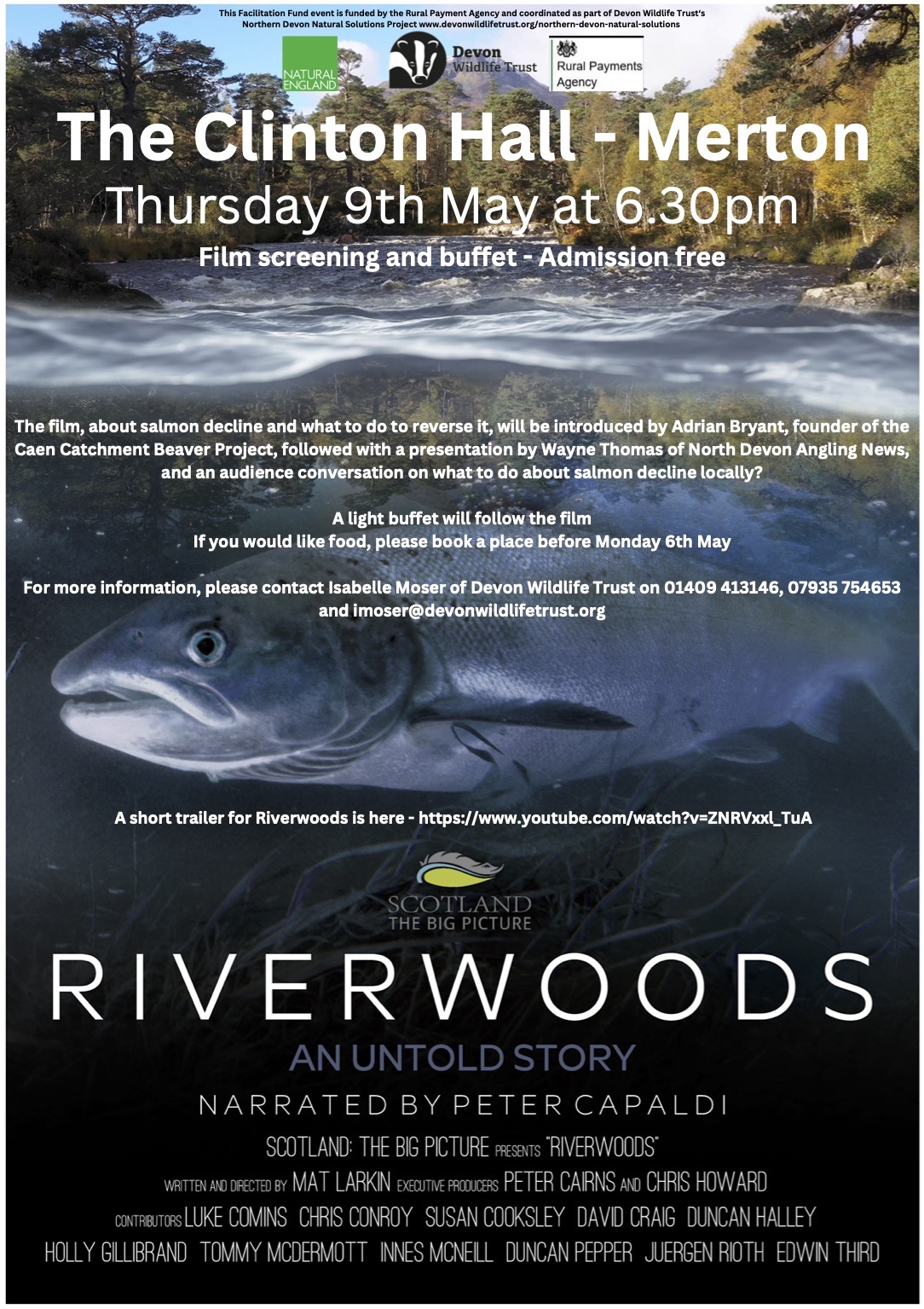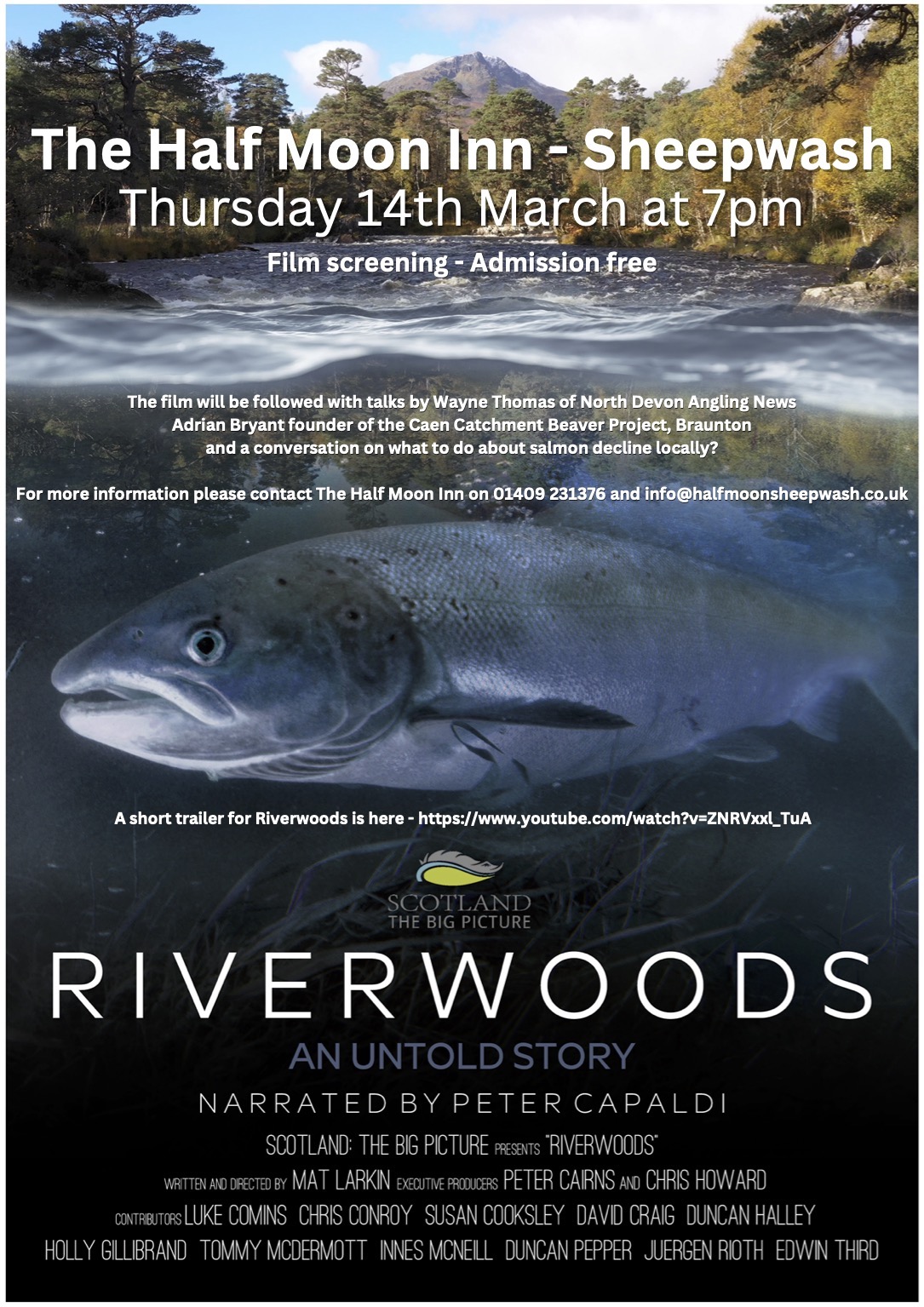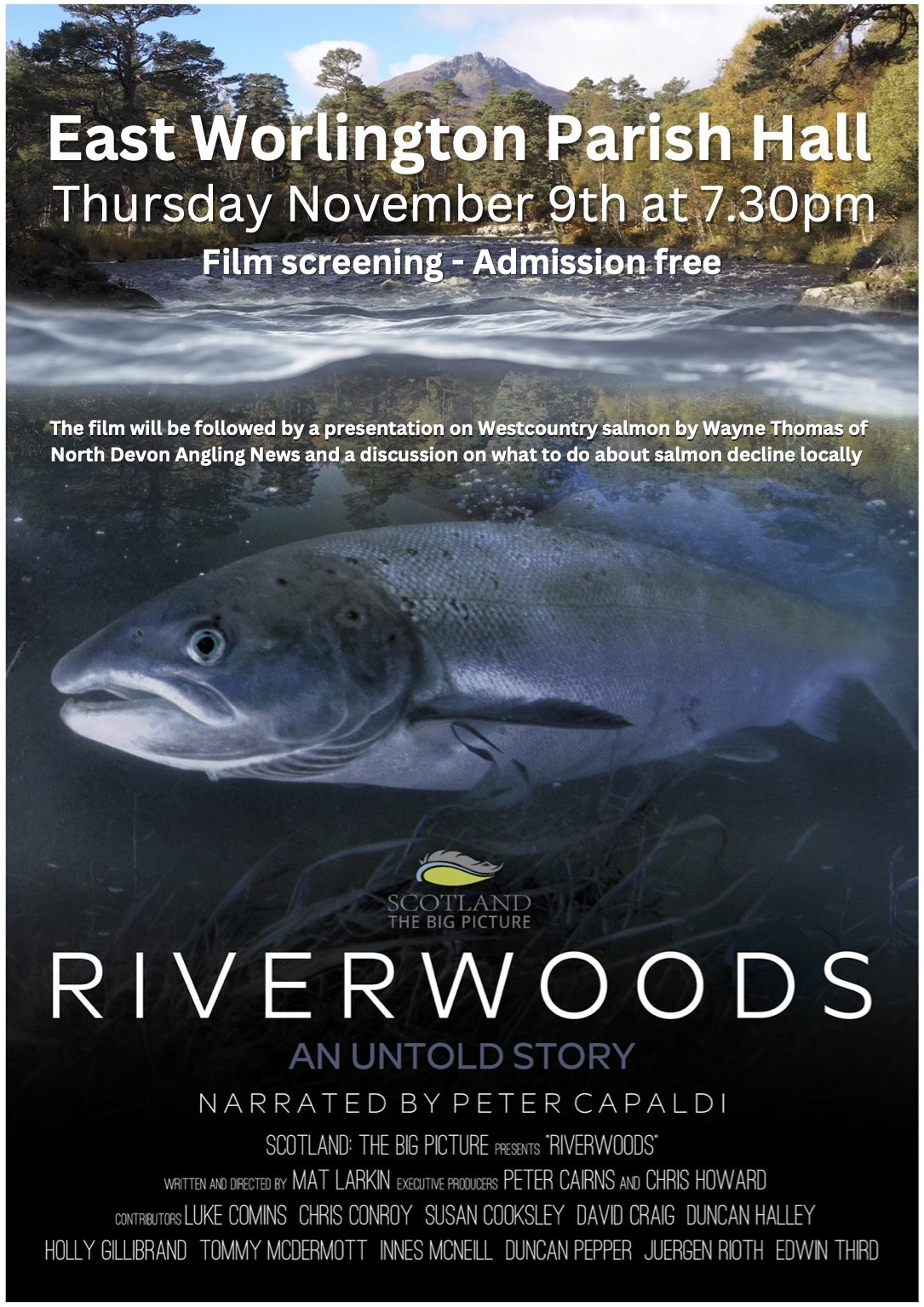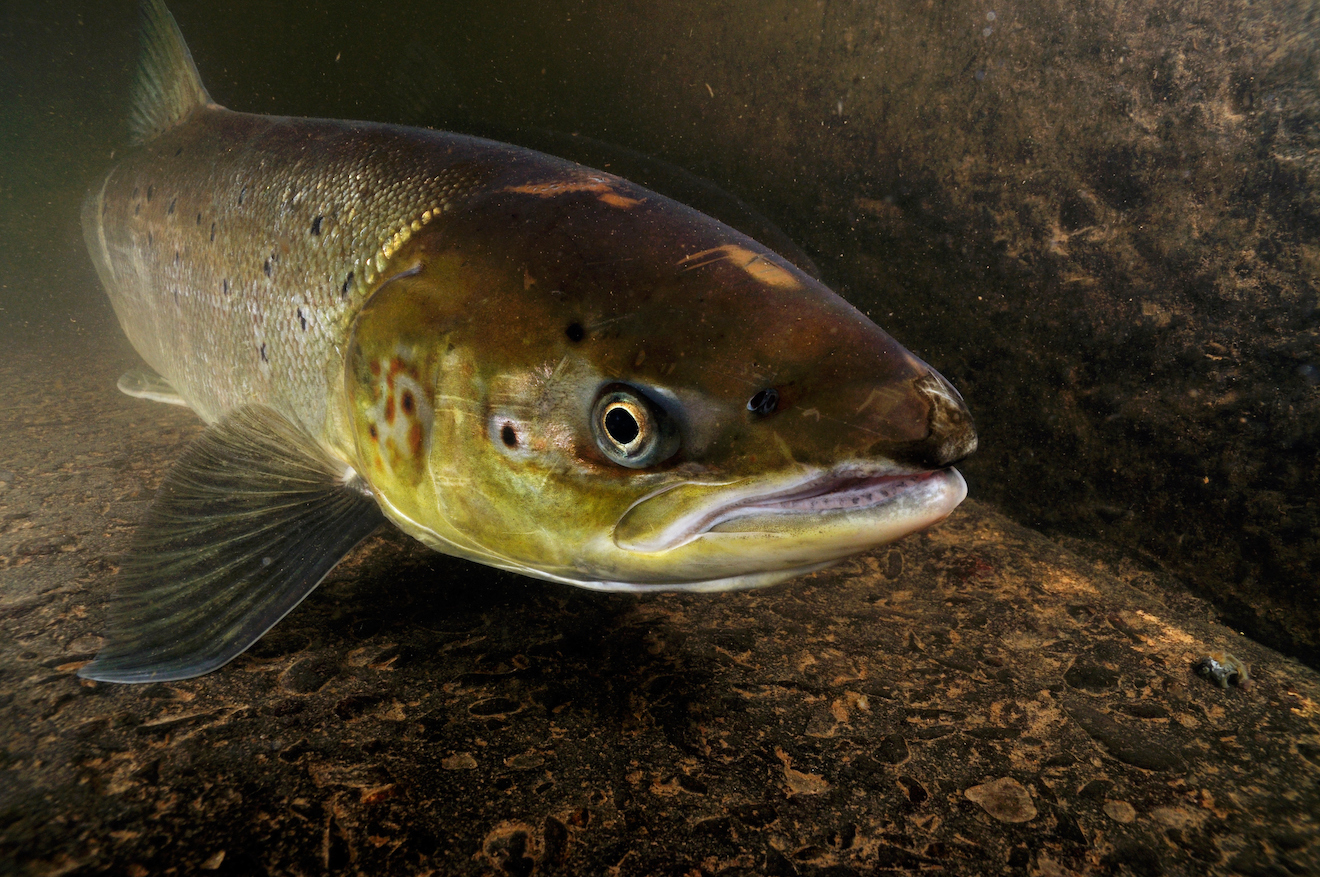
I joined with Adrian Bryant and the National Trust at Combe Martin Community Centre to show the acclaimed film Riverwoods to close to fifty attendees. The film was followed by a short presentation by myself on the dramatic decline of salmon in the West Country. National Trust Wetlands Ranger James Thomas lifted sprits with an inspiring presentation on work being undertaken across North Devon to improve wetland habitat and reduce flooding.
The Community Centre was previously the Primary School that I attended as a child back in the late 1960’s. Less than fifty yards from this building the River Umber flows on its journey through the village to the sea. It sad that in those fifty years, (a very short time in the grand scale of nature) the wild brown trout have dwindled dramatically and sea trout are perhaps no longer present. The eels that thrived in the river have also declined alarmingly as they have across the whole of the UK. It is tragic that our generation have overseen this trashing of the natural world.
This was the tenth showing of the Riverwoods Film to audiences across North Devon with over 300 watching the film at various venues. It is to be hoped that our efforts have helped put the health of local rivers higher on the public and political agenda. Keep up to date on North Devon Angling News for future events
